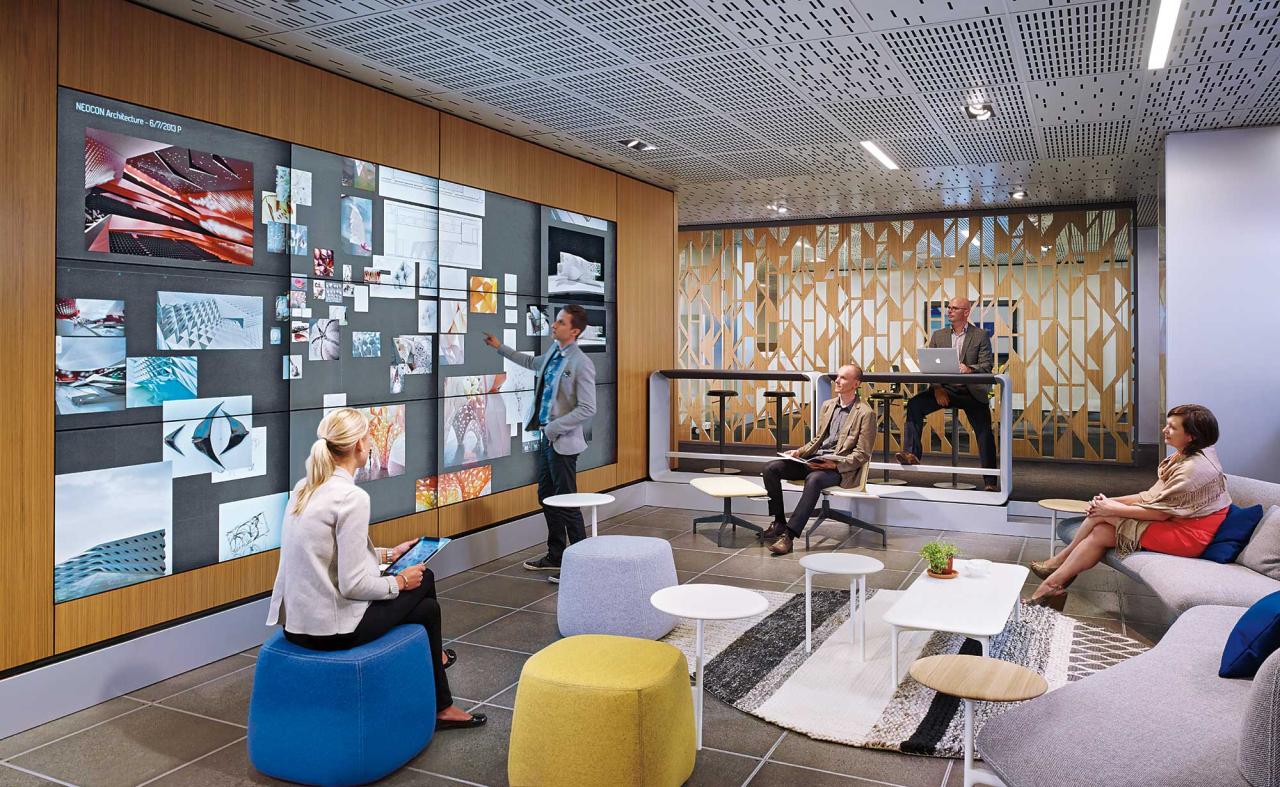The modern enterprise is drowning in a sea of fragmented applications. Today, an average knowledge worker switches between ten different applications up to 25 times per day, leading to what experts call “Application Fatigue” and a catastrophic loss of efficiency. For organizations seeking to maximize return on investment (ROI) in the lucrative, high-stakes areas of Enterprise Software, Unified Communications (UCaaS), and Digital Employee Experience (DEX), the strategy is no longer about acquiring more tools, but about achieving deep, meaningful Digital Workspace Integration. This movement is transforming the disparate collection of tools—from communication apps to project management systems—into a single, coherent, and AI-powered ecosystem. The goal is a workspace that is not merely connected, but truly unified, driving superior productivity, advanced data governance, and significant cost consolidation.
The Critical Imperative of Consolidation

In the current global economic climate, the business value of integration has moved beyond simple convenience; it is a foundational driver of profitability. The highest-value advertising keywords—those attracting major investment from global technology vendors—are directly tied to solutions that promise to untangle the modern complexity of the corporate tech stack.
1. Cost Reduction Through Application Rationalization
The immediate and most measurable benefit of strategic integration is the reduction of redundant software licenses and the operational overhead associated with managing too many vendors.
Key Financial Benefits of Consolidation:
- Elimination of Redundant Licenses: Many organizations unknowingly pay for overlapping functionalities (e.g., separate licenses for video conferencing, project documentation, and internal chat). A unified platform allows for the rationalization of this spend.
- Reduced IT Administrative Overhead: Managing fewer vendor contracts, integrating fewer APIs, and simplifying compliance protocols dramatically reduces the time spent by high-cost IT professionals on maintenance and troubleshooting.
- Optimized Licensing Tiering: Integrated suites often offer better volume discounts and feature tiering. Companies move from paying for numerous premium siloed tools to a single, more cost-effective Enterprise-grade subscription with a primary vendor.
2. The Productivity Dividend: Combating Context Switching
The hidden cost of fragmentation is the cognitive tax of context switching. Every time an employee moves from an email to a task board to a chat app, their brain must reload the specific context, wasting valuable time. Integrated digital workspaces minimize this friction.
Impact on Employee Productivity (DEX):
- Unified Notification Hubs: Instead of scattered alerts, all critical notifications (task updates, meeting reminders, document approvals) appear in one consistent stream, allowing the employee to triage information more effectively.
- Seamless Data Flow: Data created in one application (e.g., a note in a meeting) is instantly available and actionable in another (e.g., converting that note into a ticket in the project system) without manual copying and pasting.
- Reduction in “Shadow IT”: When core tools are integrated and work flawlessly, employees are far less likely to adopt unauthorized, non-compliant third-party applications to solve immediate problems.
The Architecture of the Modern Integrated Workspace

True integration is not a simple collection of connectors; it is a thoughtful, layered architectural strategy built around security, scalability, and intelligence. The core trend in 2025 is the shift to AI-Powered Orchestration.
1. Core Architectural Components
The leading high-value digital workspace platforms are built upon a few non-negotiable architectural pillars designed for the hybrid, global workforce.
Essential Architectural Pillars:
- Zero Trust Security Model: Access to all integrated components (documents, apps, services) is granted on a principle of “never trust, always verify,” regardless of the user’s location or device. Security is enforced at every micro-transaction.
- Single Sign-On (SSO) and Identity Management: A unified identity layer (often managed by an existing service like Azure AD or Okta) provides a single, friction-free authentication point across all integrated applications, while simultaneously providing IT with a centralized control for provisioning and de-provisioning access.
- Microservices Architecture: The platform uses loosely coupled services, ensuring that if one application or integration fails, the entire workspace does not crash. This enhances resilience and simplifies maintenance.
- API-First Design: All components are built with robust, well-documented Application Programming Interfaces (APIs) to facilitate quick, flexible, and scalable integrations with custom, legacy, or third-party enterprise tools (e.g., SAP, Salesforce).
2. Leveraging AI for Seamless Experience
The integration of Generative AI (GenAI) and Agentic AI is the defining characteristic of the 2025 digital workspace, moving it from a mere aggregation of tools to a truly intelligent environment.
How AI Drives Integration Value:
- Intelligent Search and Knowledge Retrieval: AI agents index data across all connected applications (documents, emails, chats, CRM records) and allow users to find specific information through a single natural language query, effectively eliminating the need to know where a file is stored.
- Proactive Workflow Suggestion: The AI observes common user behaviors and automatically suggests the next best action. For example, upon receiving an email asking for a product specification, the AI could automatically draft a reply and attach the relevant, current document from the integrated file-sharing system.
- Automated Data Reconciliation: AI continuously monitors and syncs overlapping data points (e.g., client names, project IDs) between integrated CRM and project management systems, ensuring high data fidelity and compliance without manual intervention.
Strategic Planning: The Integration Roadmap
Implementing a truly unified digital workspace is a strategic organizational change, not just a technology rollout. A clear, phased roadmap is essential to maximize ROI and minimize employee disruption.
1. Assessment and Discovery
The first phase focuses on a forensic audit of the current environment to identify pain points and prioritize integrations based on maximum business value.
Critical Assessment Steps:
- Tool Sprawl Audit: Catalog every piece of software currently in use, categorized by function (Communication, HR, Finance, Project Management). Identify areas of direct feature overlap and redundancy.
- User Journey Mapping: Trace the top 5-10 most common, high-volume employee workflows (e.g., “Onboarding a new client,” “Submitting an expense report,” “Resolving a level-2 IT ticket”). Identify where context switching and manual data transfer cause the most friction.
- Data Governance and Compliance Review: Pinpoint where sensitive data (PII, financial, proprietary) currently resides and where security vulnerabilities exist due to fragmented access controls.
2. Prioritized Implementation
Integrations should be rolled out based on the severity of the identified pain points and the potential for a quick, measurable ROI (Quick Wins).
Key Integration Priority Areas:
- Unified Communications (UCaaS) and Productivity Suite: Consolidating email, calendar, chat, and video conferencing into a single platform (e.g., Microsoft 365, Google Workspace) is often the highest-impact first step.
- HR & Onboarding Workflows: Integrating Human Resources Management Systems (HRMS) with IT ticketing and internal communication platforms to automate the entire employee lifecycle (onboarding, offboarding, policy updates).
- Client-Facing Systems Integration: Connecting Customer Relationship Management (CRM) with Project Management/Delivery tools to provide sales and service teams with a single, real-time view of client status, increasing transparency and customer satisfaction.
3. Adoption and Continuous Optimization
Success is measured by adoption, not deployment. The final phase involves training, feedback loops, and using the integrated system’s data to drive continuous improvement.
Adoption and Optimization Tactics:
- Role-Specific Training: Abandon generic training. Focus on showing specific teams (e.g., Sales, Engineering, HR) how the new integrated system makes their specific daily tasks faster and easier.
- Digital Employee Experience (DEX) Monitoring: Deploy tools that continuously measure the performance of the integrated workspace—tracking application load times, task completion rates, and employee sentiment using integrated pulse surveys.
- AI-Driven Policy Refinement: Use the system’s analytics to understand which autonomous AI actions are most effective and which need human intervention, allowing administrators to refine AI policy rules over time.
Security, Compliance, and Data Governance
In a fully integrated environment, the security perimeter shifts from the network edge to the individual user and device. For high-value, regulation-heavy industries like FinTech and Healthcare, this focus is paramount and represents a major High-CPC driver for security solutions.
1. Centralized Access and Policy Management
Integrating all applications under a single security fabric allows for consistent, granular control, which is impossible in a fragmented environment.
Advanced Security Features:
- Role-Based Access Control (RBAC): Access rights are dynamically determined by the user’s role, location, and the sensitivity of the data they are trying to access, applied uniformly across every integrated application.
- Automated Compliance Triggers: The integrated system can automatically scan and flag communications or documents that violate internal or external regulatory policies (e.g., PCI-DSS, HIPAA), preventing compliance breaches in real-time.
- Centralized Data Loss Prevention (DLP): By having a single point of visibility over data movement across all connected apps, IT can enforce rules against the unauthorized sharing or downloading of sensitive information.
2. The Unified Audit Trail
A critical, often overlooked benefit of integration is the creation of a Unified Audit Trail. When all activity is logged within a single system, forensic analysis and compliance reporting become infinitely simpler and faster.
Benefits for Governance:
- Simplified eDiscovery: In legal or internal investigations, data from all communication, document, and project systems can be instantly compiled and searched from a single point.
- Non-Repudiation Assurance: A unified log proves who accessed what data, when, and from where, providing an immutable record essential for security governance and regulatory reporting.
- Risk Prioritization: Integrated security dashboards use AI to combine seemingly disparate activity logs (e.g., a login from an unusual location combined with an attempt to download a large number of sensitive files) to generate a single, high-confidence risk score, enabling rapid response.
Conclusion
The Digital Workspace Integration Guide for the modern era demands a shift in organizational philosophy: the future of work is not characterized by the number of tools an employee uses, but by the cohesion and intelligence of the underlying platform. Achieving deep, comprehensive integration is the non-negotiable step that separates market leaders from those struggling with operational drag and diminishing margins.
This massive technical undertaking—moving from a fragmented collection of siloed applications to a single, AI-orchestrated unified collaboration platform—directly translates into superior financial outcomes, justifying the high costs associated with premium enterprise solutions. By ruthlessly rationalizing redundant tools, centralizing security under a Zero Trust framework, and leveraging Generative AI to handle data synthesis and proactive workflow management, organizations realize the coveted Productivity Dividend. Employees are freed from the cognitive burden of context switching, allowing them to redirect their energy toward higher-value, creative, and strategic tasks that directly impact innovation and customer success.
In the high-stakes sectors targeted by premium Google AdSense advertising—where every transaction is governed by strict compliance and speed is a direct competitive weapon—the ROI on integration is clear: reduced administrative costs, minimized security and compliance risks, and a dramatically improved Digital Employee Experience (DEX). Ultimately, the unified digital workspace is the foundational element that transforms an enterprise from a collection of departments executing tasks into a singular, highly efficient, intelligent, and resilient organism poised for sustained growth and market dominance. This unification of effort and capital defines the cutting edge of business operations in 2025 and beyond.













